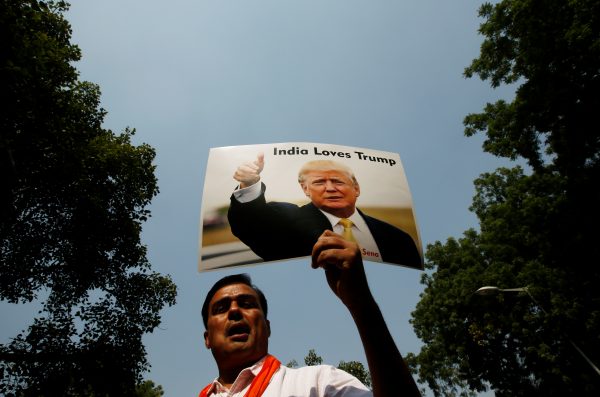On that date, Americans elected Donald Trump their 45th president, while Indian Prime Minister Narendra Modi announced his bold measure of ‘demonetisation’, which wiped out 86 per cent of India’s cash in circulation in a few hours.
What do these two individuals have in common and is a new partnership in a brave new world being forged?
The US–India relationship was on the upswing well before Modi and Trump. Both recognise that the world is a different place with China possessing considerable clout. Trump and Modi share other goals. Trump’s praise of Modi for ‘fixing corrupt bureaucracies’ and ‘cleansing’ India — of filth, corruption, pollution in the Ganges and, not so subtly, of secularism — resonates with his own ‘drain the swamp’ rhetoric. Both are of course playing for a national crowd even as they project their muscle for a global audience.
As Pankaj Mishra writes, the two men are cut from the same cloth. Tip O’Neill, a US Democratic politician, ably demonstrated that all politics is local. In this spirit, Modi and Trump are leveraging their narrow nationalist agendas to pursue their foreign policy. They use religious and economic nationalism, in different ways, to shore up their domestic constituencies and economy.
For Modi, it is to celebrate India’s glorious past and project a muscular India abroad. It is to create a new India by marginalising the marginalised — that is, ‘othering’ non-Hindus, unsubtly aimed at Pakistan to appease his chauvinistic supporters at home and abroad. He also seeks investment and technology from abroad under his ‘Make in India’ program for growth and jobs, which are critical to the more than one million people a month entering the Indian workforce.
Trump too wants to remake the United States as a ‘great’ country, exploiting the insecurity and vulnerability of working classes left behind by the reorganisation of the global capitalist system. Economic nationalism is Trump’s solution: threatening American firms to keep jobs at home and by making sure other countries, read China, do not dump their products. The rhetoric of this economic nationalism is also buttressed by a reductive logic of tackling Islamic terrorists through his recent travel ban.
So where is the convergence between the two men and the two countries they represent? Leveraging nationalism, whatever the shade of it, both countries want to keep China at bay. China’s huge trade surplus with the United States — a whopping US$347 billion in 2016 — has always been an irritation and good campaign fodder, but not much more. The fact that China’s surpluses in the end show up as investments in US Treasury bonds and help keep inflation low are less sensational details than trade deficit figures. The question is whether Chinese exports undermine US production and thus hurt employment. Recent studies have increasingly shown that unemployment among the working classes has been considerably influenced by technological change rather than trade per se.
India’s economy is of course no match for China’s. India too runs a persistent trade deficit with China, albeit on a much smaller scale (about US$47 billion in 2016), which certainly has employment implications for India. More worrying for Modi is international security, given China’s strongarm tactics in the maritime areas of Southeast and East Asia, and its forays into South Asia. Witness the competition between China and India in Myanmar and Sri Lanka and China’s strategic entry into Gwadar port in Pakistan, linking western China with Pakistan and enabling a gas pipeline from Iran into Pakistan.
A Chinese beachhead in India’s archrival does not make Modi comfortable. India seeking an Indo-Pacific presence also attracts Chinese attention. When the Dalai Lama recently visited Tawang in Arunanchal Pradesh in northeast India, China was furious. Tawang is also claimed by China as part of Tibet but border disputes between India and China, though real, are on the backburner. There are far more important, mostly economic, matters to attend to. Longstanding differences aside, with some civilisational respect for one other, both China and India maintain a delicate balance of not destabilising the region.
Despite shared views of the world and a nationalist agenda at home, it is unlikely that Trump and Modi could work together in solving global problems. They may be bold, but their limited visions and reliance on ad hocism are attributes geared to impressing domestic constituencies, not the world at large.
Anthony P. D’Costa is Chair and Professor of Contemporary Indian Studies and Director, Development Studies at the University of Melbourne’s School of Social and Political Sciences.
He is the coeditor of The Land Question in India: The State, Dispossession, and Capitalist Transition in India, newly published by Oxford University Press.

